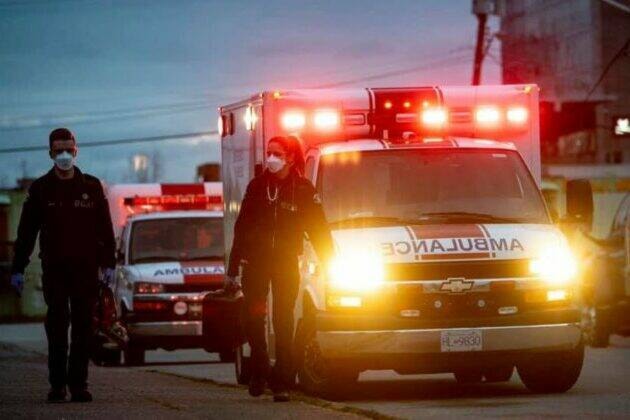Coming soon to Rossland, Fruitvale and Salmo is the betterment of ambulance services.
Announced by BC Emergency Health Services (BCEHS) and Ambulance Paramedics and Ambulance Dispatchers of BC (APADBC), these improvements are part of the the unions’ 2022-2025 collective agreement ratified earlier this year.
The new models continue with the province’s transition away from on-call shifts and toward more full-time positions, with the goal of bettering conditions for paramedics and improving access to ambulances in areas that have historically been under-served.
The Rossland station will operate using a “mix shift model,” meaning staff will have eight regular part time staff in the station, and staff will be on-duty in the station for 16 hours each day and have eight hours being on-call.
The villages of Fruitvale and Salmo will run with a 24/7 “alpha shift model,” meaning they will have at least eight full-time paramedics in the stations, and staff will be on-duty 24 hours a day.
“We are excited to be bringing these staffing model improvements to our paramedics and the rural and remote communities we serve,” said Leanne Heppell, BCEHS’ chief ambulance officer.
“We recognize that one staffing model doesn’t work for all parts of the province, and these models will help us improve our services to better meet the needs of the community and patients and enable more of our paramedics to live and work in their home communities.”
As BCEHS transitions many part time positions to full time positions, there will be 271 full time positions added to support the newly tailored models, for an increase of 239.5 full-time equivalent.
BCEHS and APADBC say they’ve worked closely to determine the best staffing models for each community. Changes also resulted through consultation with local paramedic staff, health-care partners and community members.
BCEHS says it will continue working closely with partners to address future needs and make changes as needed.
Through the new models:
*BCEHS will be available to support routine transfers in the late afternoon and evenings as needed.
*Paramedics will no longer need to work for 72 straight hours, as required in the schedule on call (SOC) model.
*Paramedics will have a better work/life balance, which means that BCEHS will be better able to ensure all communities are covered, especially in the evenings.
The success of this transformation throughout rural and remote B.C. leverages the new collective agreement, ratified in February 2023, which also increased the on-call rate of pay from $2 per hour to $12 per hour.
It agrees to phase out a pre-existing SOC model into one of three different models that will better address the needs of ambulance paramedics and the communities they serve.
This announcement builds on other significant provincial investments to better support ambulance paramedics and dispatchers and improve services for people throughout B.C.
Since 2017, more than 1,000 new permanent full-time paramedic and emergency medical responder positions, and 42 emergency medical dispatch positions have been added.
Creating opportunities for people to join the health-care workforce in B.C. is part of government’s Health Human Resources Strategy, which was announced on Sept. 29, 2022.
The strategy aims to support patients by ensuring they get the health services they need and are cared for by a healthy workforce.
It focuses on 70 key actions to recruit, train and retain health-care workers, while redesigning the health-care system to foster workplace satisfaction and innovation.
“Paramedics play a major role in small-town healthcare,” said Jason Jackson, APADBC, president.
“With this announcement, thanks to our continuing collaborative approach to improving deployment and staffing, we will see a renewed commitment to providing many new full-time resources to dozens of communities across B.C.,” he added.
“This is a fundamental change in how we provide paramedic services in these communities and will address how we respond to 911 calls, how we recruit and retain paramedics to work in smaller communities, and most importantly, how we can provide better care to our patients.“
Read more: #Local News
Read more: #Community
